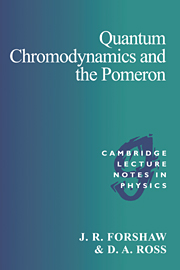1 - What is a Pomeron?
Summary
Before the advent of the field theoretic approach (QCD), a good deal of progress had already been made in developing an understanding of the scattering of strongly interacting particles. This progress was founded on some very general properties of the scattering matrix. Regge theory provided a natural framework in which to discuss the scattering of particles at high centre-of-mass energies.
With the arrival of QCD much attention was diverted away from the ‘old fashioned’ approach to the strong interactions. Interest was re-ignited within the particle physics community with the arrival of colliders capable of delivering very large centre-of-mass energies (e.g. the HERA collider at DESY and the Tevatron collider at FNAL). For the first time physicists started to investigate in earnest the properties of QCD at high energies and compare them with the predictions of the Regge theory.
The high energy limit provides the arena in which the Regge properties of QCD can be studied. It is the meeting place of the ‘old’ particle physics with the ‘new’. Since by ‘old’ we mean over 30 years ago it is necessary to commence our study of high energy scattering in QCD with an introduction to (or recap of) Regge theory. This chapter will contain a ‘whistle-stop tour’ of Regge theory and Pomeron phenomenology. We keep this to the minimum which will be required in order to follow the subsequent chapters and refer the interested reader to the literature (e.g. Collins (1977)) for further details.
- Type
- Chapter
- Information
- Quantum Chromodynamics and the Pomeron , pp. 1 - 24Publisher: Cambridge University PressPrint publication year: 1997



